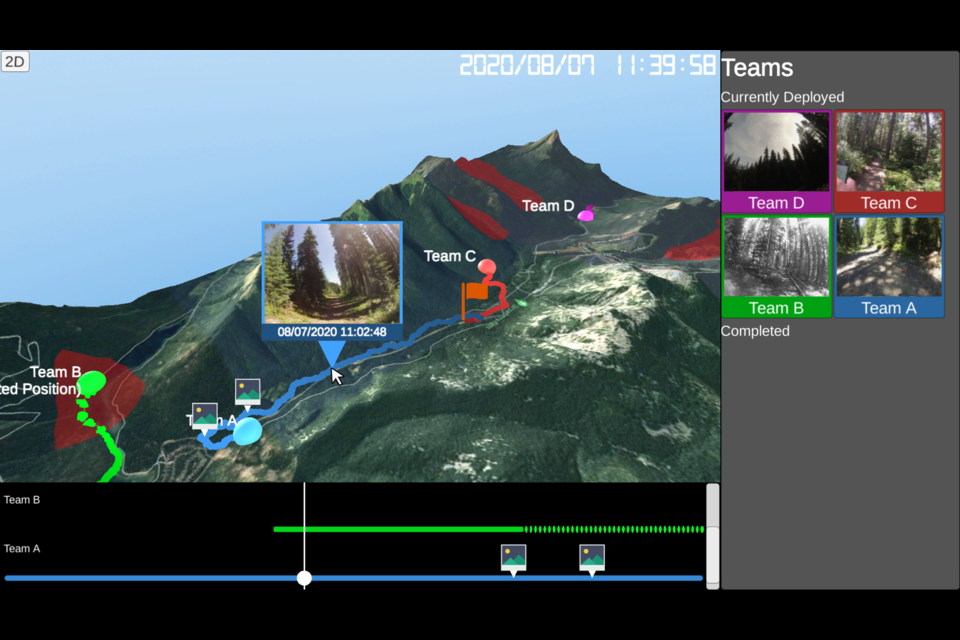Researchers at SFU have developed an innovative system to improve search and rescue field communications.
“RescueCASTR” is a platform that outfits SAR field crew members with body cameras to stream footage to the management team at the command post.
The prototype would supplement radio communication, so command workers can get further information about the field workers’ environment.
Brennan Jones, a visiting scholar at SFU’s School of Interactive Arts and Technology, developed the system for his PhD work at the University of Calgary with the supervision of SIAT’s Carman Neustaedter and the University of Toronto’s Anthony Tang.
His research surveyed SAR workers across Canada and B.C.
The RescueCASTR prototype, which is a proof of concept and won’t be deployed in the field, would connect photos from the body camera to the command post’s computers, which would then display a live map of the field team’s GPS location.
Workers at the command post would be able to hover a cursor over the field team’s path on the digital map and see images taken in the area.
Currently, SAR field workers communicate with their command post primarily through radio, which can be limiting as it’s audio-only.
Specific weather and terrain information can be communicated much more easily through visual imagery than spoken words – for instance, how much snow buildup or water run-off the search teams are dealing with.
Jones said the footage, even if there is a delay in transmission, can help the command post plan their future task assignments.
“It can let them know, okay, if I send teams out in this area in another few hours or so, do I need to send them out with snowshoes? Or do I need to send them out with big boots?” said Jones.
Jones said some SAR workers expressed concerns about the technology.
Workers mentioned that transmitting visual footage to the command centre could be seen by a lost person’s family members waiting nearby. The command post would need to prevent the family from seeing any potential distressing images sent from the field.
The body cameras also might not capture the full story of what's happening on the ground and could call into question the actions of field workers.
Jones, who is currently a postdoctoral researcher with Meta, said while there’s no plans to deploy this specific prototype, he’s excited by the potential opportunities to improve remote communication for the SAR community.
“There's so much opportunity to explore and build technologies that could truly improve the work that [SAR workers] do and make it easier for them to … find the lost person and to also keep themselves and everybody else safe.”





